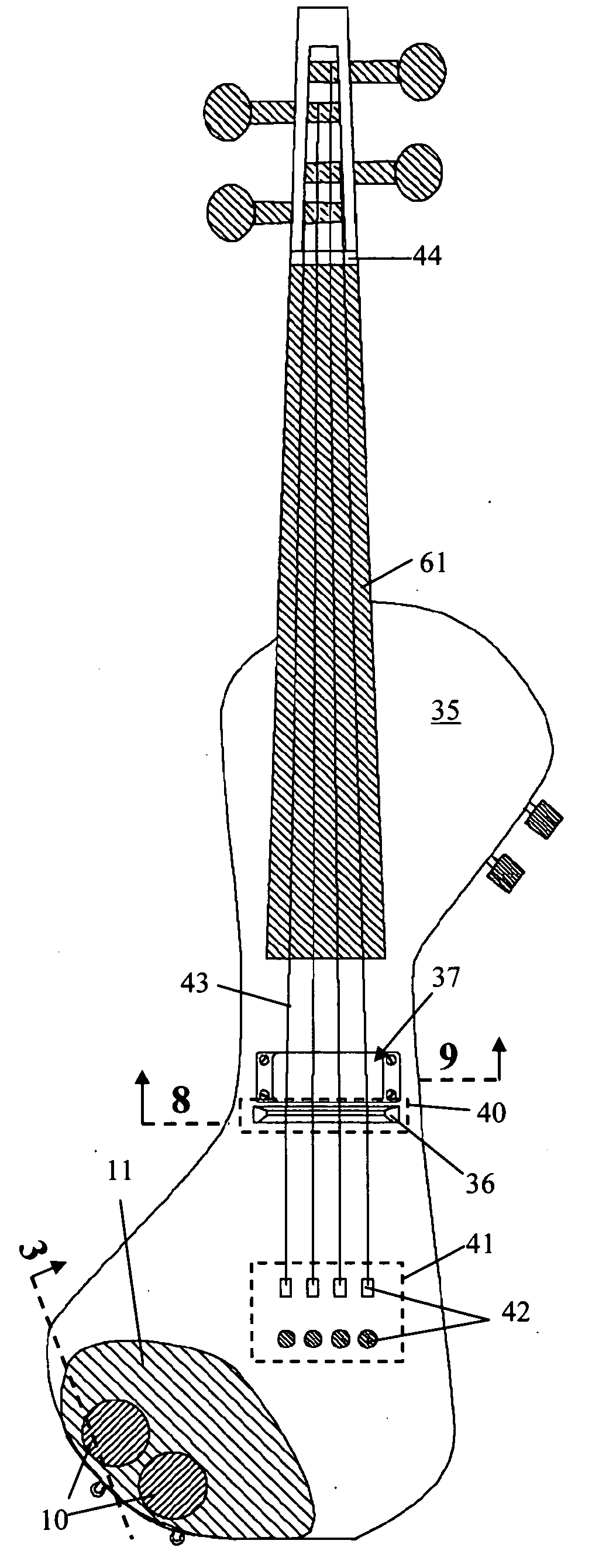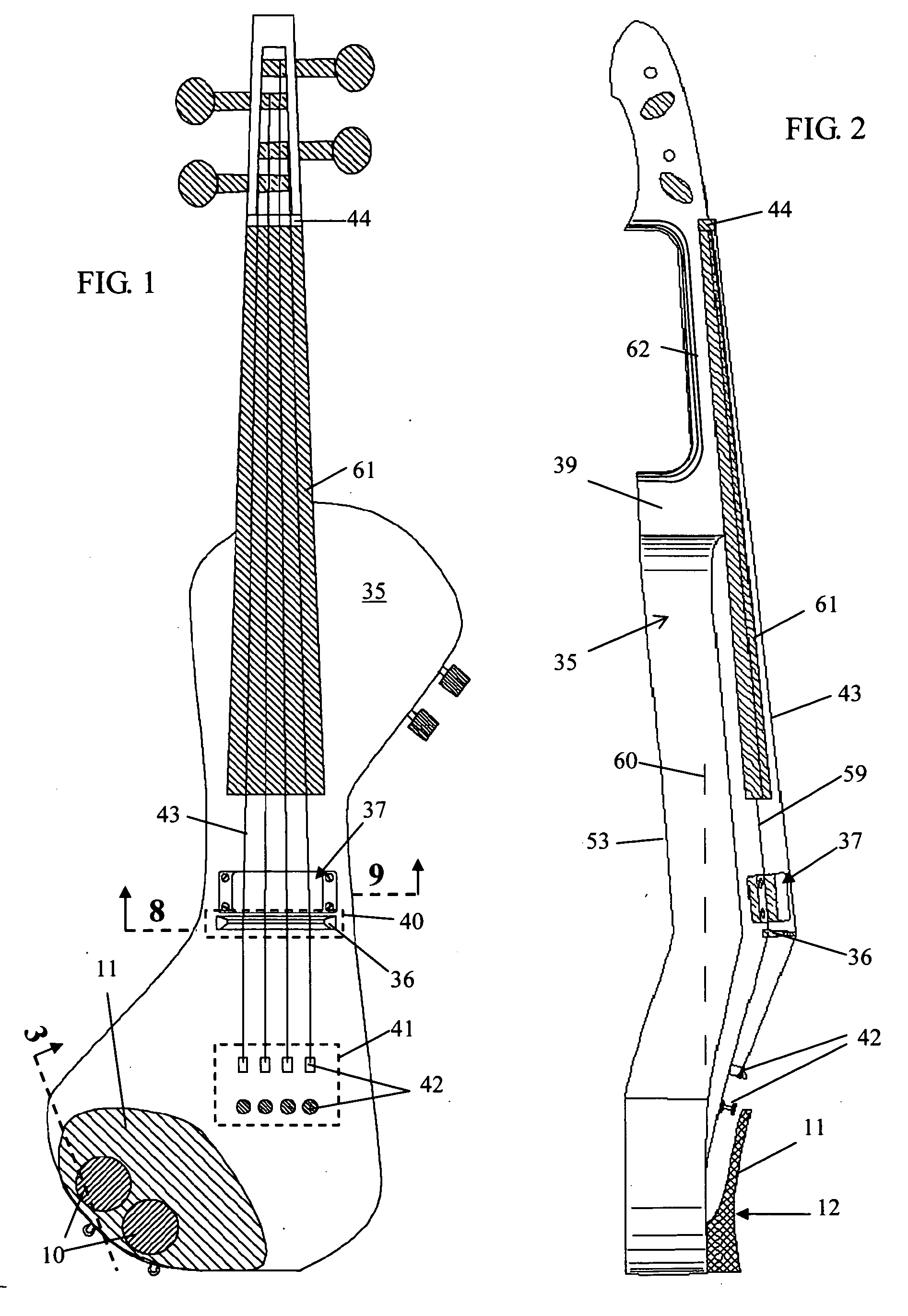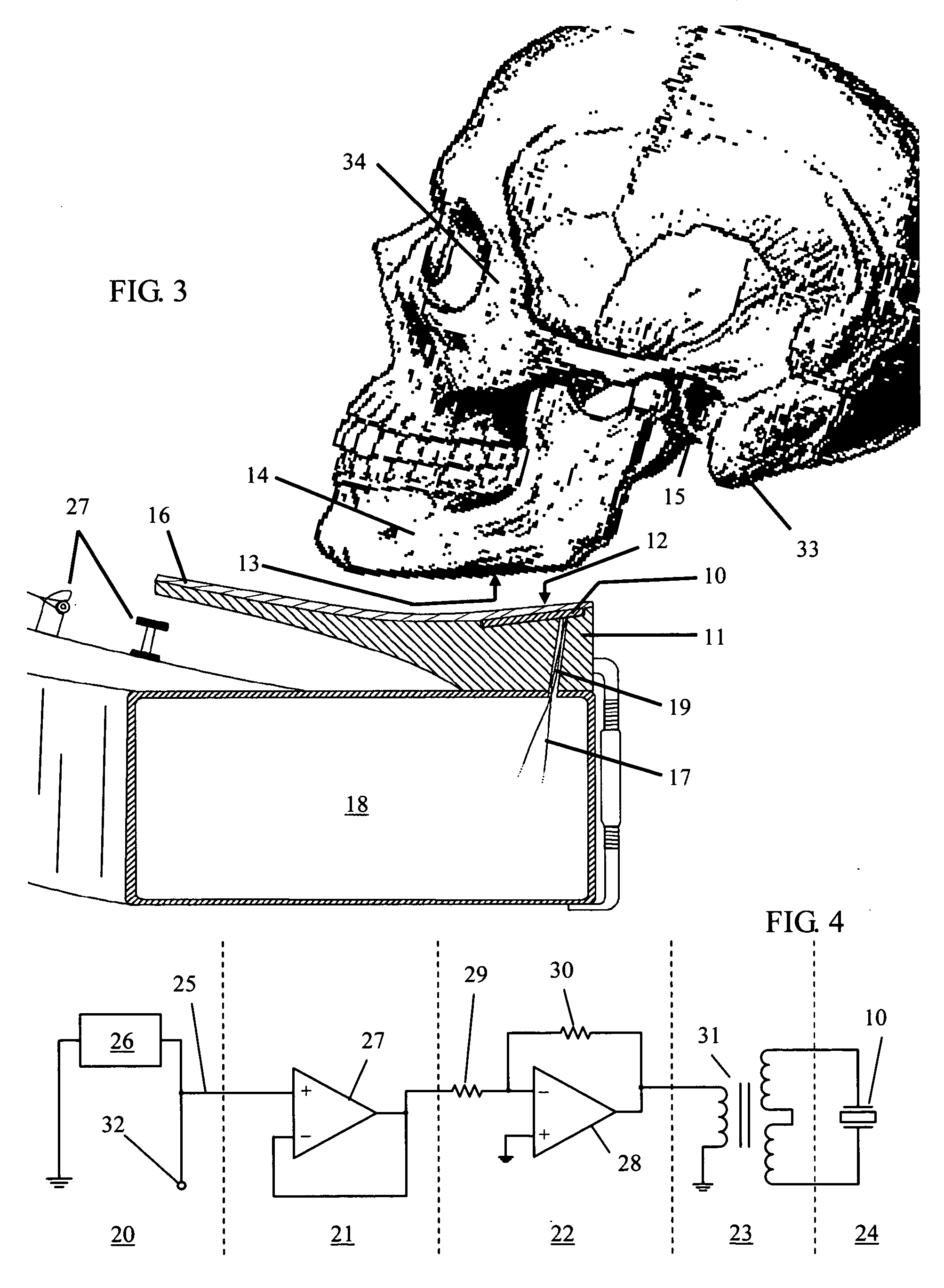Musical instrument with bone conduction monitor
a bone conduction monitor and instrument technology, applied in the field of musical instruments, can solve the problems of inadequate hearing of one's own instrument, satisfactory acoustic interface, and new difficulties in the amplification of instruments, and achieve the effects of reducing the susceptibility of microphonic instruments to amplified instruments, convenient and convenient use, and high quality
- Summary
- Abstract
- Description
- Claims
- Application Information
AI Technical Summary
Benefits of technology
Problems solved by technology
Method used
Image
Examples
Embodiment Construction
[0028] There are at least two mechanisms by which we perceive sound. A first mechanism is by the action of air pressure variations, propagated through the air to the ear canal, and thereby to the eardrum, causing vibrations which are transferred from the eardrum to the ossicles, and eventually to the internal fluid and structures of the cochlea, causing the sensory phenomenon by which sound perception takes place. This air propagated hearing mechanism utilizes the structures of the outer, middle, and inner ear, and is normally the predominant means of hearing.
[0029] A second mechanism is bone conduction. In bone conduction, acoustic energy is conducted, principally by the bones of the jaw and skull, to the inner ear, bypassing the outer ear and, for the most part, the middle ear as well. Note that this acoustic energy conduction takes place without significant radiation of energy as sound into the air, and without perceptible motion of the structures through which the conduction ta...
PUM
 Login to View More
Login to View More Abstract
Description
Claims
Application Information
 Login to View More
Login to View More - R&D
- Intellectual Property
- Life Sciences
- Materials
- Tech Scout
- Unparalleled Data Quality
- Higher Quality Content
- 60% Fewer Hallucinations
Browse by: Latest US Patents, China's latest patents, Technical Efficacy Thesaurus, Application Domain, Technology Topic, Popular Technical Reports.
© 2025 PatSnap. All rights reserved.Legal|Privacy policy|Modern Slavery Act Transparency Statement|Sitemap|About US| Contact US: help@patsnap.com



